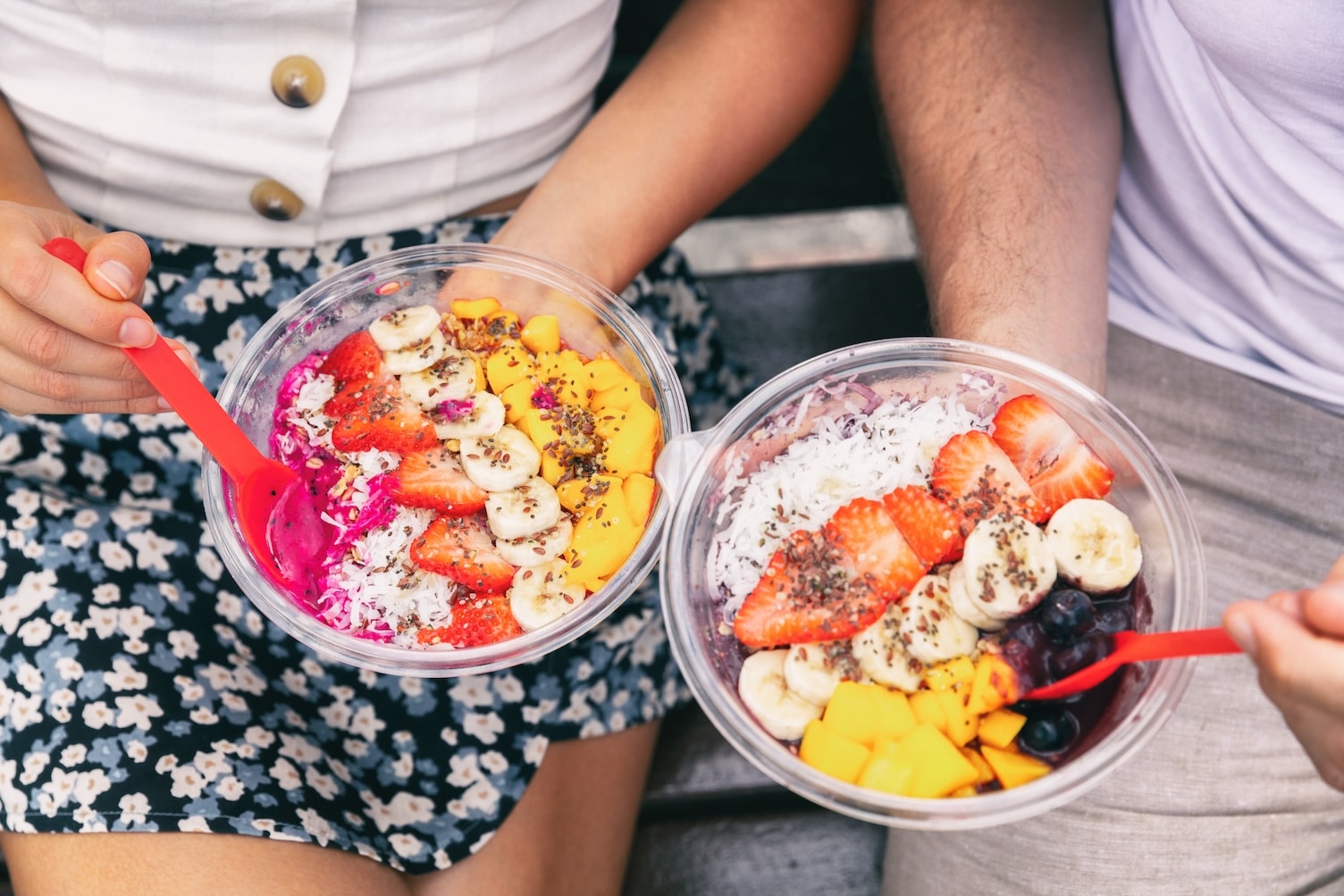5 Healthy Eating Tips for Summer To Keep You on Track Leave a comment
The temperature is rising, which can only mean one thing: Summer is here!
Warmer weather promises beach days, picnics, barbecues, fairs, and festivals. And there’s no better way to enjoy summer than eating well and staying fit.
How Do You Eat Well During Summer?
Look, we get it—summer can be a blast. And nobody wants to be the food police telling you what to—or not to!—eat while you’re having fun.
Besides, healthy eating is more complex than having more of one thing and less of another. (Just read our recent blog post about ultra-processed foods.)
The best approach is to focus on balance and consistency.
5 Tips for Healthy Summer Eating
We spoke to registered dietitian Joanna Gregg for some advice on how to stay the course on your summer health goals:
1. Track your food to ensure balance and consistency
It can be hard to stay on track during the summer with all the events and travel happening.
“One way to ensure your eating patterns support your goals this summer is to track portion sizes and log your intake,” says Joanna Gregg. “Research shows that consistently self-monitoring your diet with digital health technology correlates with weight loss.”
So, if you’re hoping to lose weight this summer, a calorie-tracking app like MyFitnessPal can help!
Fun fact: MyFitnessPal gives members access to one of the world’s largest nutritional databases, making it easy to record everything you eat precisely and consistently.
2. Remember to keep your body hydrated
As far as summer health tips go, it doesn’t get more important than staying hydrated.
In warmer temperatures, proper hydration can help prevent heat stress during summer activities and is vital to various functions, including:
- Delivering nutrients to cells
- Disposing of body waste
- Protecting joints and organs
- Regulating temperature
According to Joanna, “drinking plenty of water keeps the body hydrated and working optimally. Also, remember that foods high in water content (think fresh fruits and veggies) also help fill you up and contribute to daily water intake.”
So, how will you know you’ve had enough?
The U.S. National Academies of Sciences, Engineering, and Medicine states that adult men need at least 3.7 liters of total water daily, while adult women need 2.7. That’s between 12 and 16 glasses a day with needs varying based on activity level and perspiration.
Fun fact: In 2023, MyFitnessPal members logged over five BILLION cups of water! Start tracking your water intake now.
3. Pick seasonal fruits and veggies depending on your location
Keep your summer meals varied by including fruits and seasonal vegetables.
Foods that are in season are fresher, cheaper, and promote sustainable eating. A variety of fruits, such as berries and peaches, are typical summer foods you’ll find across the country.
Other examples include:
- Plums
- Apples
- Cherries
- Nectarines
- Watermelon
- Beets
- Celery
- Tomato
- Carrots
- Avocados
- Zucchini
- Eggplant
- Cucumbers
- Green beans
- Bell peppers
Research has shown that plant-based diets can reduce the risk of high blood pressure, diabetes, and heart disease.
Registered dietitian Joanna Gregg agrees that “the vitamins, minerals, antioxidants and fiber in fruits and vegetables can help you achieve and maintain a healthy body weight and boost your immune function.”
Using our food-tracking app, you can also receive weekly reports of your nutrition and exercise stats. “Weekly Digests” provide insights into your habits, making it easier to adjust and improve every week.
4. Fuel up with low-calorie (and healthy!) snacks
Snacking can get a bad rep. But its reputation has nothing to do with a desire to eat and everything to do with what you’re craving! So we say: Take it up with the snack, not the snacker!
Opting for lighter versions of traditional warm weather treats and snacks can help you snack in a better-for-you way all summer long. Whole food snacks also provide additional benefits, including:
- Giving you a boost of energy
- Curbing your appetite so you don’t overeat during your next meal
- Getting extra nutrients from foods such as fresh fruits or nuts
Joanna Gregg echoes these ideas by encouraging you to “Limit consumption of snacks high in refined carbohydrates like chips, pretzels, and cookies. They might taste good, but foods lacking fiber or protein are unlikely to fill you up. Aim for whole food snacks that contain a combination of protein, carbs and healthy fats to keep your appetite at bay.”
Here are some of our favorite recipes:
5. Prep meals to take to social gatherings
Meal prep is another terrific way to eat well and control your portions. But most people associate meal prep with planning ahead for workdays and not attending social events.
This summer, switch it up and make meal prep the rule, not the exception!
Get into the habit of prepping meals to take to parties and gatherings. Many iconic summer recipes are delicious and nutritious and can even help you set an inspirational example.
The Bottom Line
You can still have a healthy diet without giving up your favorite foods for summer. It just means you have to plan a little better!
Start by tracking your food intake. Knowing exactly how much you’re eating helps you stay accountable. Using a food tracking app, you can even indulge in not-so-healthy snacks every now and then without throwing off the balance of your summer nutrition.
It also helps to drink plenty of water, align your diet with seasonal offerings, and stick (mostly!) to low-calorie and low-carb snacks.
Finally, up your meal-prep game and stick to healthy food choices this summer, even at parties.
You’ll feel better, stay on track with your goals, and might even inspire loved ones to make healthier choices, too.


